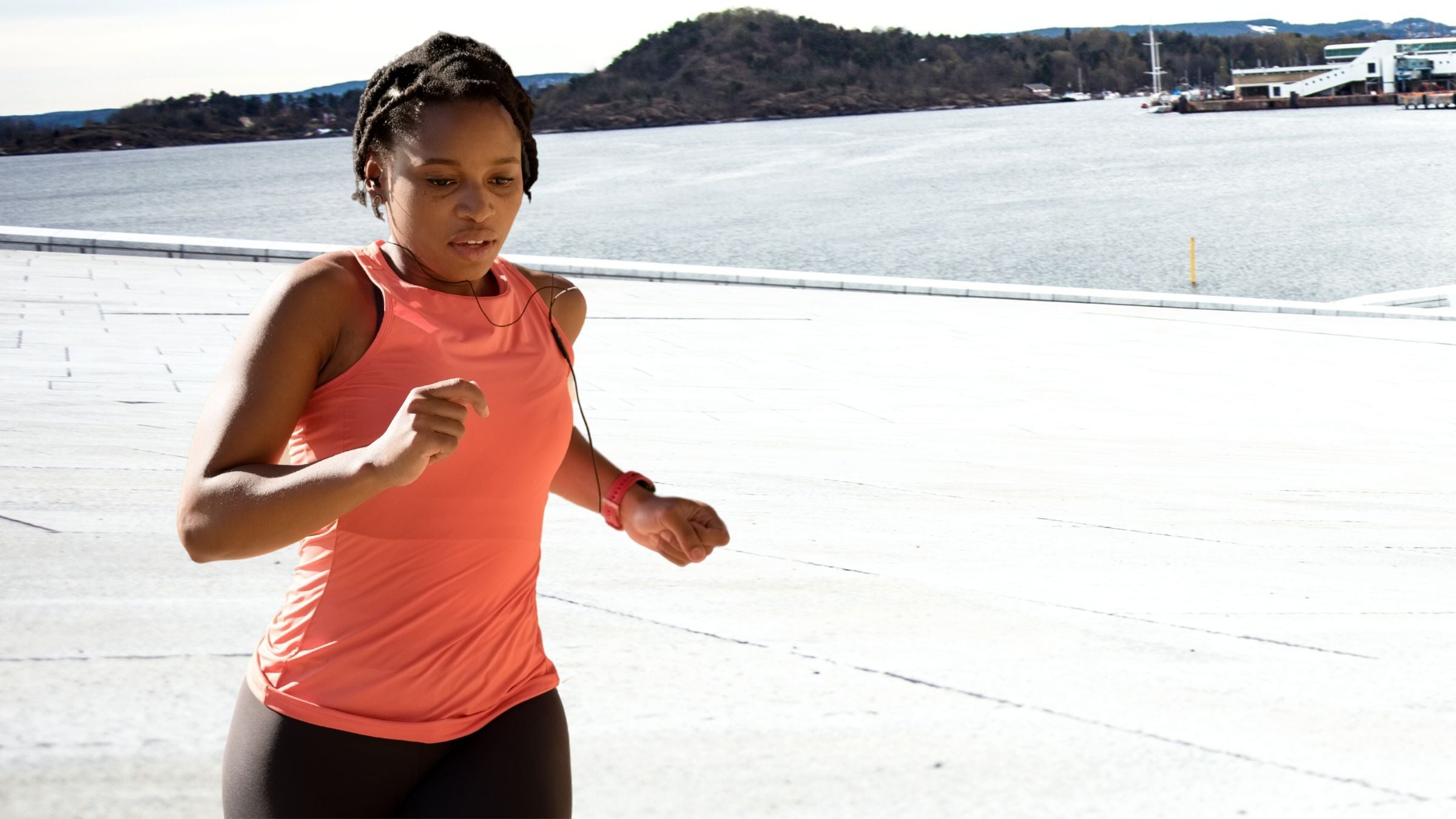How to Run Hills Without Hurting Your Knees

(Photo: Getty Images)
Running up that hill can be a challenge. It takes a combination of stamina, perseverance and physical and mental strength to take the climb. But hill workouts are crucial for a runner, especially if you’re training for a race with elevation changes throughout. Hills can even make you a stronger, faster athlete on flat roads as your legs become powerful enough to push you upwards.
Before you pound the uphills, there are a few things to keep in mind to avoid injury—especially in your knees.
RELATED: The Science Is In, and Hills Are Absolutely Worth the Burn
Why do my knees hurt when running hills?
Hills can be hard on your body because they require a change in running form as you drive your legs uphill, then downhill. The downhill is actually what may cause a negative effect on your knees. “Running downhill requires eccentric control, or muscle lengthening, from your quads, the big muscle that controls knee extension,” explains physical therapist Dr. Lisbeth Hoyt of Custom Performance. “Eccentric muscle contractions can be more challenging during a run, which is why we are more sore from hilly runs sometimes.”
When you’re running uphill, there can also be more stress on your knees due to reduced ankle movement. “It’s harder to maintain an upright posture on hills, which leads to more stress through your joints at each footstrike,” says Dr. Hoyt.
Reassess Your Stride
When you’re taking on hills, your stride may suffer as a result. According to physical therapist Dr. Mandy Fox of Finish Line PT, when running downhill, athletes tend to overstride, landing on a mostly-straight leg with their foot out in front of their center of mass and exerting a braking force to slow down. “This increases the forces going through the patellofemoral joint, increases demand on the quadriceps, and reduces overall efficiency,” says Dr. Fox. Instead, she suggests leaning forward from the ankles, landing with your feet underneath your body, and maintaining your cadence while running downhill. “It should feel a bit like a controlled fall,” Dr. Fox asserts.
Additionally, try shortening your stride on the uphill. This will help you lean into the run while maintaining a strong upright posture. Dr. Fox sees uphill running as a great way to practice reducing the gait mechanical errors that can lead to patellofemoral pain. “It’s very difficult to overstride while running uphill, so practice landing with your foot underneath your center of mass, with your knee bent rather than straight when landing,” she explains.
Increase Your Running Cadence
With shorter strides comes an increase in cadence. Shorter, quicker steps make for more efficient, pain-free running. Dr. Hoyt maintains that increasing your cadence downhill will help you land softly and avoid extra impact through your joints. On the uphill, quicker steps will promote a strong knee drive to propel you to the top while keeping your feet landing right underneath your body.
The proof is in the data: according to Dr. Fox, if you tend to run with a reduced step rate, a 5% increase in cadence can reduce forces on the knee joint by up to 20%.
Keep Your Gaze Ahead Of You
Hunching forward can only hinder your running form. Keeping your gaze halfway up the hill will help you run with good posture. “Poor posture can increase the loading forces through your knee joint instead of allowing your muscles to appropriately absorb the force,” says Dr. Hoyt.
Incorporate Strength Training Into Your Routine
Hill work is all about the preparation. Before tackling hill sprints, incorporate strengthening exercises into your regime that focus on quadriceps, hamstrings, gluteal muscles, and calves. “A key risk factor for developing patellofemoral pain across numerous studies is decreased knee extension isometric strength,” says Dr. Fox. “Knee extensor strength is important because the quadriceps play a critical role in shock absorption and control knee flexion at the landing phase of running gait.”
Calf muscle strength is also important for uphill running. “The gastrocnemius, soleus, and Achilles tendon undergo an increased stretch with increased effort to power the body uphill. This causes high mechanical demand on these muscle and tendon tissues,” Dr. Fox explains. “The soleus is 14% more active during uphill than level running.” Studies have linked decreased strength of the calf to patellofemoral pain.
To strengthen these areas, physical therapist and certified strength and conditioning specialist Dr. Victoria Sekely recommends squats, lunges, step-ups and calf raises. “I would do step-ups onto elevated surfaces to mimic the elevation you’ll get from a hill. They target quads, glutes, and hamstrings,” Dr. Sekely explains. “Heel raises are important because your foot and ankle go through a greater range of motion as you climb up a hill.”
The Bottom Line
“Hills are not actually all that bad for the knees, nor is running as most people think,” says Dr. Laura Barreca of Custom Performance. “When running, specifically uphill, we are actually helping to strengthen muscles surrounding the joint to help with stability while also lubricating the joint through compression. Compression produces something called synovial fluid to help absorb forces and promote overall joint health.”
Don’t abandon hills the second you feel pain. Assess and adjust your running form to ease the impact on your knees, and incorporate more strength exercises for an optimal hills training session.